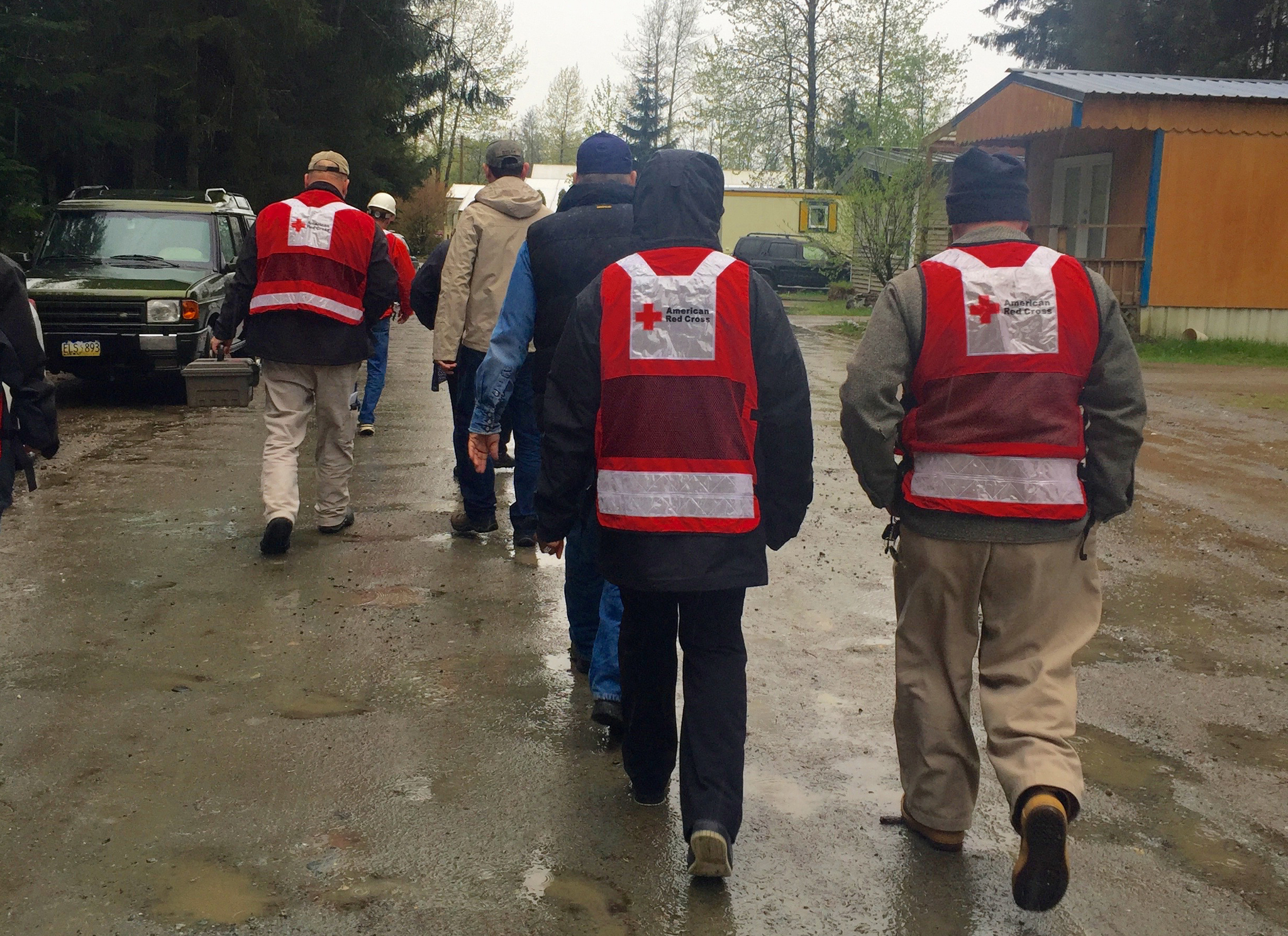Through earthquakes and mudslides, during multi-acre wildfires and after residential blazes, the American Red Cross has become a familiar presence, lending a helping hand at disasters nationwide.
The Civil War’s “Angel of the Battlefield,” Clara Barton, founded the American Red Cross in 1881, and the organization made its first foray into Alaska, which was then a territory, in 1917. That was when the Red Cross Delano Nursing Corps became the first public health nurses to work in the state, providing itinerant health services to the Unites States’ most remote possession.
Alaska’s Red Cross volunteers responded to the devastating flu epidemic of 1918-1919 and the Good Friday earthquake of 1964, among other disasters. In 1964, Gov. William A. Egan designated the American Red Cross as the official relief agency to provide emergency assistance to Alaskans affected by disasters.
In Juneau, the American Red Cross often can be found offering assistance after fires, most recently after the Jan. 31 Basin Road fire. When the Gastineau apartment building fire in 2012 displaced a number of tenants, the Red Cross was on scene within a couple of hours, setting up a shelter at Centennial Hall to provide support, shelter, food and resources. Similarly, the Red Cross set up an emergency shelter at Centennial Hall after a giant mudslide in 2009. That shelter served as many as 50 people on the morning of the evacuation, according to Empire archives.
The American Red Cross of Alaska, which currently has offices in Juneau as well as in Anchorage, Fairbanks, Kodiak, Wasilla, JBER, Ft. Wainwright, and Eielson Air Force Base, is celebrating its centennial this year. And it is only fitting that the statewide organization is kicking off the centennial in Juneau because the capital city is the home of the original Red Cross of Alaska chapter, said Lori Wilson, the executive director for the interior.
“The first charter in Alaska was in Juneau, so we’re starting off the celebration here,” Wilson said, adding that Gov. Bill Walker is scheduled to speak at the fundraiser.
The event will include a short program on the history of the Red Cross in Alaska and its impact on communities around the state.
“People forget we’re here,” Wilson said.
Barton helped changed the face of first aid during the Civil War, at a time when there were no ambulance corps or field medics, Wilson said.
“They would just pull the wounded off the field,” she said.
At the time, women helped the war effort primarily by sewing uniforms and making bandages. Barton, said Wilson, felt they could do more.
“She broke that glass ceiling,” Wilson said.
The American Red Cross was ratified at the Geneva Convention in 1882. A federal mandate was issued in 1917 for the Red Cross to respond to disasters.
Over time, said Wilson, the Red Cross has morphed and evolved as the need for its services has changed.
“Communities wanted training in CPR and first aid,” said disaster program specialist Andrew Bogar. “There were not a lot of hospitals. … They would bring out a nurse who would train volunteers in the (needed) skills.”
For instance, Bogar said, nurses helped train volunteers during a yellow fever epidemic in Virginia, helping to stop the spread of communicable diseases and teaching basic first aid.
These days, the Red Cross deals most frequently with disasters, either of the natural or man-made variety.
“What’s changed is what we focus on: What the need is,” Wilson said. “We’re not stuck in a pigeonhole – we can be reflexive.”
“That’s the beauty of not being federally funded,” she said, adding that few people realize that the Red Cross receives no federal funding and relies on grants and donations.
“That’s the biggest misperception,” Wilson said, “We receive less funding than most nonprofits.”
That’s why volunteers play such a vital role.
“We are always looking to recruit volunteers,” Bogar said. “That is still the challenge when getting to remote locations.”
The ideal is to have a core group of volunteers in the community who can provide immediate support, rather than having to wait for assistance to get to the area in need.
While the biggest need in Alaska is for volunteers who want to be involved in disaster response, Bogar said, there also also educational programs that need help like the Red Cross’ smoke alarm campaign, which install alarms in homes free of charge, and the “pillowcase project,” which teaches elementary schoolchildren how to prepare for an evacuation in case of fire
Anyone interested in volunteering can start application process online at redcross.org/local/Alaska, go to interest and then connect.
“Our volunteers are the best in the world,” Bogar said. “They give up so much.”
Know & Go
What: 100 Years of Flirting with Disaster silent auction and fundraising event; dinner will be provided by Abby’s Kitchen and entertainment by DJ Vic
Where: Elizabeth Peratrovich Hall, 320 W. Willoughby Ave., Juneau
When: 6-10 p.m. Friday, Feb. 17
Tickets: $75 per person or $600 for a table of eight. Purchase online at https://jahc.org/?event=flirting-with-disaster-2017-red-cross-of-ak&event_date=2017-02-17; in person at the JAHC: 350 Whittier St., Juneau, or call 907-586-2787; or in person at Hearthside Books & Toys, 254 Front St., or Rainy Retreat Books, 113 Seward St.
Reporter Liz Kellar can be reached at 523-2246 or at liz.kellar@juneauempire.com.

